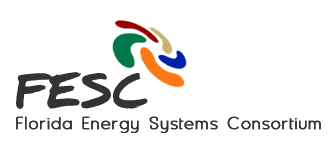Quick Facts & Impacts
- Insulation helps control conduction, one of three heat flow paths through a home
- Increased insulation R-values equals more insulating capacity & reduced costs to operate a home’s heating and cooling systems
- Attic insulation is the most important location and best return on investment
Potential Benefits
- Decreased living costs and increased occupant comfort
- Decreased energy demand through increased efficiency
- Decreased greenhouse gas (GHG) emissions
- Durable and long-lasting improvement
Introduction
Heat flows from warm areas to cool areas. In Florida, this often means heat is flowing from a warm outdoors to an air-conditioned indoors. On winter days, heat flows from a warm inside to a cold outside. Insulation can reduce the amount of heat that flows, reducing cooling and heating costs.
Insulation is rated in terms of its thermal resistance. This resistance, or R-value, refers to the performance of insulation by measuring the resistance to heat flowing through the insulation over time. An insulation with greater resistance (higher R-value) to heat flow means that less heat enters your home during warm months and less heat leaves your home in the cool months, when you are heating the interior space.
Slower heat flow means reduced cooling and heating costs. In addition, health and comfort factors are greatly influenced by how readily heat moves through a building and its exterior shell, called an envelope. Heat moves in three ways: (1) conduction, (2) convection, and (3) radiation. Controlling heat in one way does not necessarily affect the other two.
Conduction
![Figure 1. A high R-value insulation keeps heat out in summer and inside in winter. [Click image for full size version.] Credit: PREC](https://www.myfloridahomeenergy.com/wp-content/uploads/2015/06/Conduction-02-300x199.png)
Figure 1. A high R-value insulation keeps heat out in summer and inside in winter. [Click image for full size version.] Credit: PREC
The transfer of heat by contact with solid objects, such as the ceiling, walls, or floor is called conduction (see Figure 1). A good thermal barrier along a building envelope, such as high R-value insulation in the walls, attic, and raised floors, as well as multi-paned glass, help to reduce conduction.
Convection
![Figure 2. Although forces such as wind and mechanical fans can move air—and the heat it contains—in any direction, warmer air tends to rise. Rising warm air displaces sinking cooler air, leading to “convective loop” air currents. [Click image for full size version.] Credit: PREC](https://www.myfloridahomeenergy.com/wp-content/uploads/2015/06/Convection-300x255.png)
Figure 2. Although forces such as wind and mechanical fans can move air—and the heat it contains—in any direction, warmer air tends to rise. Rising warm air displaces sinking cooler air, leading to “convective loop” air currents. [Click image for full size version.] Credit: PREC
The transfer of heat by movement through gases or liquids, such as the air or water, is called convection (see Figure 2). Lack of having a complete air barrier at the same location as the insulation barrier causes heat loss and gain from convection. Some insulation products include an air barrier that must be sealed at the edges to reduce convective heat movement. Any breaks in an air barrier between conditioned and non-conditioned space may allow heat to bypass the insulation and cause an increased use of energy. In two-story homes, floor joists are not always sealed off from adjacent attic spaces over one-story spaces and attic air is right next to the ceiling.
Radiation
The transfer of heat across empty spaces is called radiation (see Figure 3). Solar radiation heats home surfaces during the day, while at night homes radiate heat to the cold sky. The night sky radiation and radiation between your body and room surfaces is referred to as long wave radiation. In general, white and light-colored materials tend to reflect more solar radiation than dark materials. Long wave radiation depends on a material’s surface emissivity which is not visible to the human eye. Selective coatings on window surfaces are a good example. In northern homes the surface coating is designed to keep long wave radiation from escaping through the window. In southern homes the coating is designed to prevent solar radiation from coming into the home.
![Figure 3. The transfer of heat across empty spaces is called radiation. [Click image for full size version.] Credit: PREC](https://www.myfloridahomeenergy.com/wp-content/uploads/2015/06/Radiation-03-300x173.png)
Figure 3. The transfer of heat across empty spaces is called radiation. [Click image for full size version.] Credit: PREC
Although insulation can slow all three types of heat flow, its greatest impact is on conduction. The overall R-value of thermal insulation depends on the type of material along with the thickness. When calculating the R-value of a multi-layered installation, the R-values of the individual layers are added.
Why is it Important to Insulate the Attic?
Insulation in the attic is critical because more heat per square foot travels through your ceiling than any other structure in a house. The easiest and most cost-effective way to insulate your home is to add insulation in the attic. You can measure attic insulation thickness with a ruler and multiply the number of inches by the R-value of that particular insulation to get an insulation rating. The Department of Energy’s Insulation Fact Sheet provides information on how to determine the R-value using this technique. Information provided in Table 1 may also be of assistance.
Table 1. Common Insulation R-Values (Per Inch of Thickness)
| Fiber Insulations | |
| Cellulose | 3.0 – 3.7 |
| Fiberglass | 2.2 – 4.0 |
| Mineral Wool | 2.8 – 3.7 |
| Cotton | 3.0 – 3.7 |
| Perlite | 2.5 – 3.3 |
| Foam Insulations | |
| Polyisocyanurate | 6.0 – 6.5 |
| Extruded Polystyrene (XPS) | 5.0 |
| Expanded Polystyrene (EPS) | 3.6 – 4.4 |
| Open-Cell Low Density Polyurethane | 3.6 – 3.8 |
| Closed-Cell spray Polyurethane | 5.8 – 6.8 |
If the rating is less than R-19, you will probably benefit by adding more insulation. If you’re unsure about what type of insulation already exists in your home, take a sample to an insulation expert. (Wear gloves and an effective particle filter over your nose and mouth when taking samples.)
Typically, current best home building practices indicate an R-30 to R-38 for attic insulation. The Florida Building Code identifies two distinct “climate zones”. Climate Zone 1 consists of the following south Florida counties: Broward, Collier, Hendry, Lee, Miami-Dade, Monroe, and Palm Beach, and require a minimum R-30 attic insulation. All other Florida counties are considered to be in Climate Zone 2 and require a minimum R-38. Certain conditions may exist in the home, such as cathedral ceilings, that may limit the ability to meet these R-values.
The effectiveness of an insulated wall or ceiling also depends on how and where the insulation is installed. For example, compressed insulation will not give its full rated R-value. Also, the overall R-value of a wall or ceiling will be somewhat different from the R-value of the insulation itself because some heat flows around the insulation through the studs and joists in wood- or steel-framed construction (thermal bridging). With careful design, this problem can be reduced.
The key to an effective insulation system is proper installation of quality insulation products. A building should have a continuous layer of insulation around the entire building envelope—with no gaps or compression. This is considered your “thermal envelope”. Studies show that an improperly installed thermal envelope can reduce the overall performance by 30 percent or more.
But My Home Still Feels Uncomfortable, Even with Proper Attic Insulation!
If your attic has ample insulation and your home still feels too warm in the summer and/or cold in the winter, you might consider adding insulation to the exterior walls. However, in most areas of Florida it is rarely, if ever, cost effective to add wall insulation to an existing home. Before considering this option, check the ductwork and heating, ventilation and air conditioning (HVAC) equipment to determine if the problem is HVAC-related. Additionally, an inadequate air barrier may be contributing to the problem by allowing air to leak into or out of your home.
How Can I Determine How Much Wall Insulation is in the Home?
Determining the level of wall insulation in an existing home is difficult. One way is to turn off the electricity, once you have permission (if needed) and all safety considerations have been met. Using a screwdriver, remove the cover on the electrical outlets (or phone jacks) located on exterior walls. Using a flashlight, small mirror, and ruler, determine the type and thickness of the insulation by peering in and looking along the sides of the electrical/phone box. (Don’t forget to turn the electricity back on when you’re finished.) If you don’t feel comfortable “looking around,” have someone else do this for you.
What Types of Insulation Materials are Available?
Remember, the R-value for any material depends on the type and thickness of the insulation. Fiberglass is the most common type of insulation, manufactured from sand and recycled glass. Rock wool is made from natural rocks—basalt primarily—and formed under high heat. Mineral wool is primarily made from recycled materials from steel mill wastes. Cellulose is made from recycled newsprint and cotton is often made from post-industrial recycled cloth like denim–both are usually treated with fire-retardant chemicals.
Polyisocyanurate (ISO board), extruded polystyrene (XPS or blueboard), expanded polystyrene (EPS or beadboard), or other materials are usually found in rigid board form. These boards are lightweight and generally have an R-value of 4 to 7 per inch. Spray foams such as urethanes and polyicynene are also available with R-values from 3 to 6 per inch. For more information on these insulation products and many more, see Insulation Materials.
How Can These Materials Be Installed?
Insulation comes in many forms including: blankets (rolls), batts, rigid foam boards, loose fill, high density damp spray, blown-in-blanket, and spray foams. Each type is made to fit in a different part of your house. Rolls or blankets are usually laid over the floor in the attic. Batts are made to fit between the studs in walls or between the joists of ceilings or floors. Rigid board insulation is intended for use in confined spaces such as exterior walls and cathedral ceilings. Loose fill insulation is blown into the attic or walls. High density damp spray is used in the attic or walls. Blown-in-blanket is a loose fill material held in place in walls or ceilings by netting. Spray foams are used in the attic or walls. For more information on insulation materials, where applicable, installation method and advantages, see Types of Insulation.
How Do I Choose Insulation?
Your choice of insulation depends on how much space you have for insulation, the bulk density of the materials (weight per volume) so your ceilings won’t sag with the additional weight, how easy the space is to access, how much money you can spend, how easy would it be to replace the insulation in case you had a roof or wall leak, and whether you are building a new home or improving an existing home. If building a new home, you may consider installing insulation on the underside of the roof decking and sealing the attic space creating an “unvented” attic. This approach is permitted in the Florida Building Code and requires certain conditions are met regarding insulation air -permeability and the attic’s air barrier.
If designing a new home with an unvented attic, the air permeability of the insulation may dictate condensation control requirements as found in the Florida Building Code. When purchasing, compare the cost per square foot (installed) of your R-value choice. Also, some types of insulation settle more than others. When insulation settles, its cost effectiveness decreases. Make certain your ceiling or walls can handle any additional weight from added insulation before installation. It is very important to understand that how insulation is installed is almost as important as the R-value. Insulation that is compressed or installed with gaps will not function at its rated efficiency. The same is true if spray foams are not applied to the required depth to achieve the desired R-value. . When making your choice of insulation products, look for ENERGY STAR® certified insulation by clicking on the Browse Energy Star Certified Insulation Products link from this web page.
Some Insulation Installation Tips
- Never compress insulation…it reduces the insulating capacity.
- Seal all openings and cracks along the ceiling, light fixtures, and top and sole plates with the appropriate product(s) before installing insulation.
- Never cover your attic or soffit vents with insulation.
- Access hatches and doors should be weather-stripped and insulated to a level equivalent to the insulation on the surrounding surfaces
- Match your wall system type to the most compatible insulation.
- Mark attic trusses with spray paint to guide proper insulation depth and uniformity.
- Wear protective clothing to reduce skin and/or lung irritation and always read and follow manufacturer’s labeled directions.
- Unless specifically denoted on recessed light fixtures, bare stove pipes, motors, or any other equipment, always install insulation clear and away from heat sources to reduce the risk of equipment failure or fire.
- To reduce insulation degradation, provide easy access to all parts of the attic and fasten wiring, cables, and other systems above the insulation accessible by a service easement platform.
What Other Factors Should I Consider?
Properly insulating your home will not only help reduce your heating and cooling costs but also make your home feel more comfortable. However, adequate insulation must be combined with proper air sealing and moisture control measures to ensure optimal occupant comfort.
Life-cycle analysis, environmental impact, and human health issues associated with the resource extraction, manufacture, use, and disposal of insulation are also important considerations. See the Environmental Building News (EBN) article in the resources section for a good overview.
Additionally, for companies and consumers with concerns about false advertising, improper installation and other related insulation considerations, there is a Federal Trade Commission Rule designed to protect you (Title 16 – Commercial Practices, Part 460 – Labeling and Advertising of Home Insulation). There are heavy fines for companies that break this Rule.
Monetary incentives, rebate programs, and/or free or low-cost home energy audits are often available from the state or federal government as well as from many utility providers. When looking for upfront financial incentives related to renewable energy and efficiency, visit the Database of State Incentives for Renewables & Efficiency (DSIRE) website and enter your zip code. You can also search, by zip code, for special offers and rebates as related to ENERGY STAR certified insulation products here.
Before building a new home or adding insulation to an existing home, do the research to help you make the best decision for your home, wallet and the environment as lower utility costs will mean less need for power from your utility company and therefore less use of our natural resources.
References and Resources
Environmental Building News. (January 2005). Insulation: Thermal Performance is Just the Beginning. Vol. 14, No. 1. Retrieved May 26, 2015.
Federal Trade Commission: U.S. Government Printing Office, Electronic Code of Federal Regulations. (May 2015). Title 16 – Commercial Practices, Part 460 – Labeling and Advertising of Home Insulation. Retrieved May 20, 2015.
Florida Building Code 5th Edition (2014), Residential. Accessed May 28, 2015.
Florida Building Code 5th Edition (2014), Energy Conservation. Retrieved May 28, 2015, from
Miller, C., Sullivan, J., and Ahrentzen, S. (2012). Energy Efficient Building Construction in Florida, 7th Edition. ISBN 978-0-9852487-0-3. University of Florida, Gainesville, FL.
U.S. Department of Energy. (April 27, 2015). Adding insulation to an existing home. Retrieved May 22, 2015.
U.S. Department of Energy. Database of State Incentives for Renewables & Efficiency (DSIRE). Retrieved May 24, 2015.
U.S. Department of Energy. (2008). Insulation fact sheet. Retrieved May 22, 2015.
U.S. Department of Energy. (April 27, 2015). Insulation materials. Retrieved May 24, 2015.
U.S. Department of Energy. (April 27, 2015). Types of insulation. Retrieved May 24, 2015.
U.S. Environmental Protection Agency. (August 2007). A do-it-yourself guide to sealing and insulating with Energy Star. Retrieved May 24, 2015.
U.S. Environmental Protection Agency, ENERGY STAR. (n.d.). Look for ENERGY STAR certified insulation. Retrieved May 24, 2015.
U.S. Environmental Protection Agency, ENERGY STAR. (n.d.). Special offers and rebates from ENERGY STAR partners. Retrieved May 24, 2015.
Acknowledgements
Authors: Craig R. Millera and Wendell A. Porterb
Editor: Hal S. Knowles, IIIa
Reviewers: Robin Vieirac (2010), Craig R. Millera (2010); Kathleen C. Rupperta (2015)
a Program for Resource Efficient Communities, Florida Cooperative Extension Service, Institute of Food and Agricultural Sciences, University of Florida, Gainesville, FL
b Department of Agricultural and Biological Engineering, University of Florida, Gainesville, FL
c Florida Solar Energy Center, University of Central Florida, Cocoa, FL
Original publication 2010. Updated June 2015.




